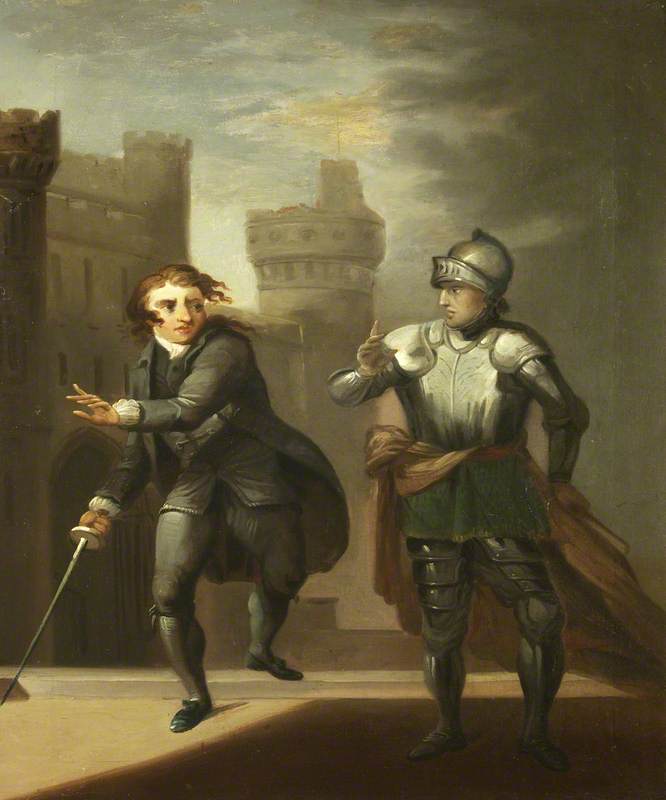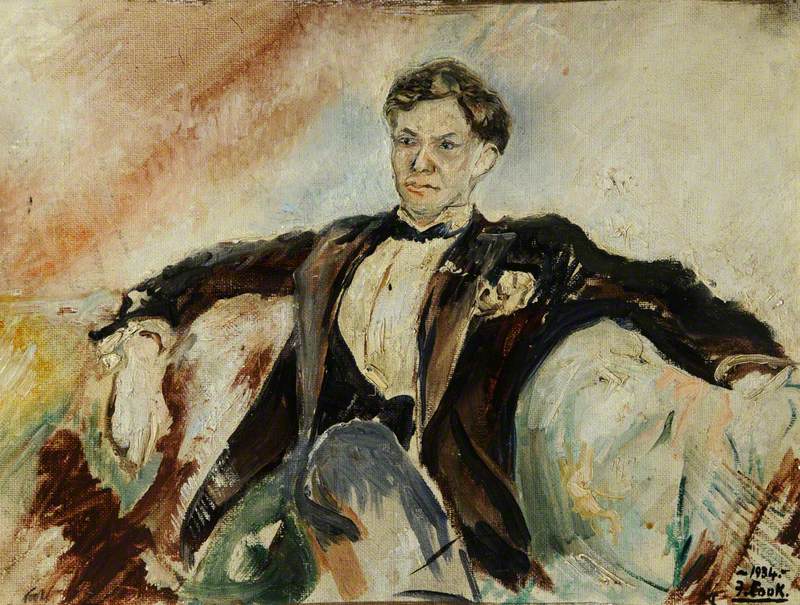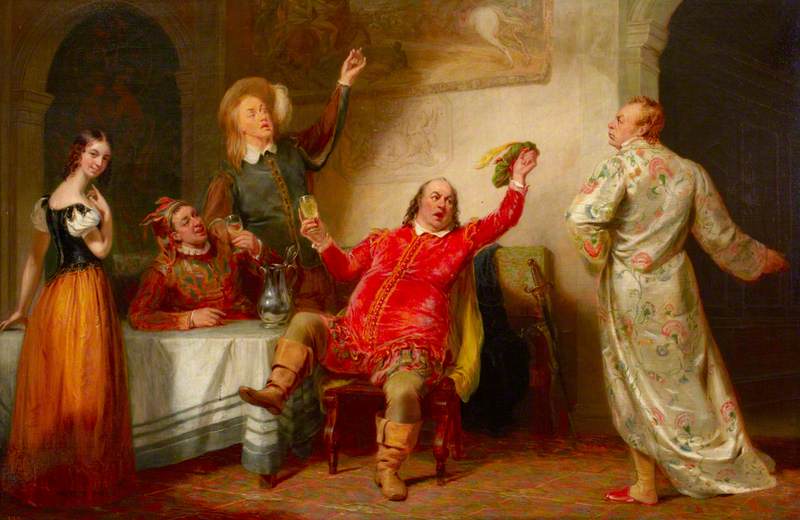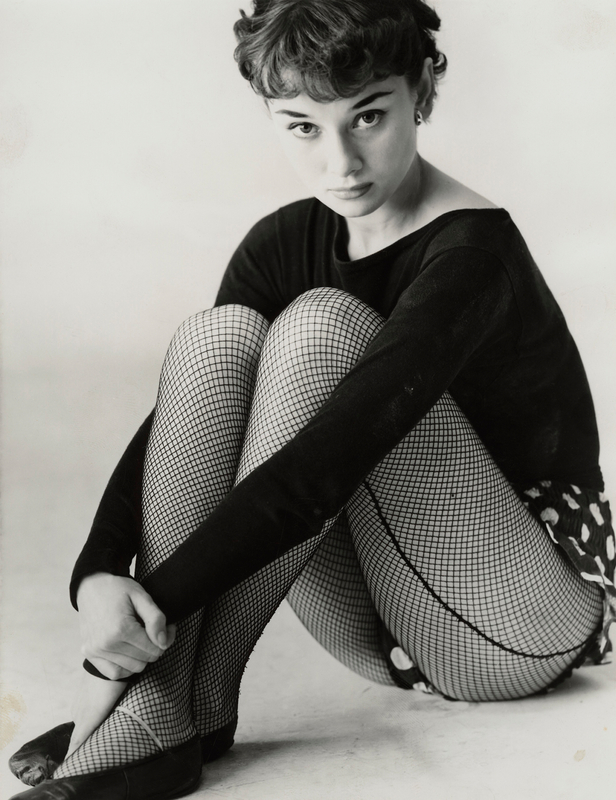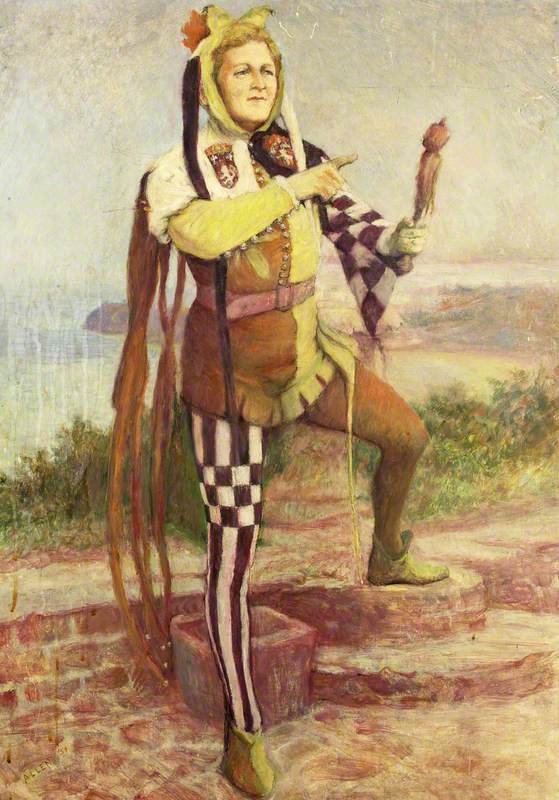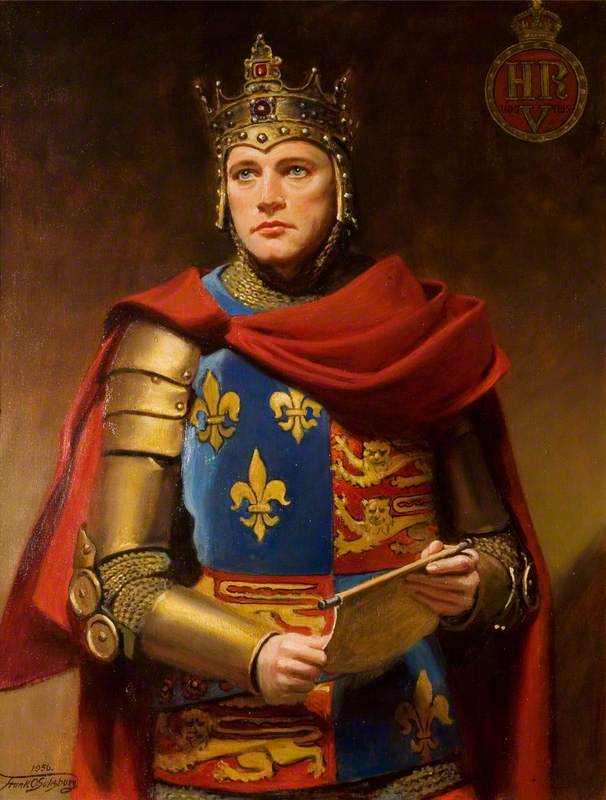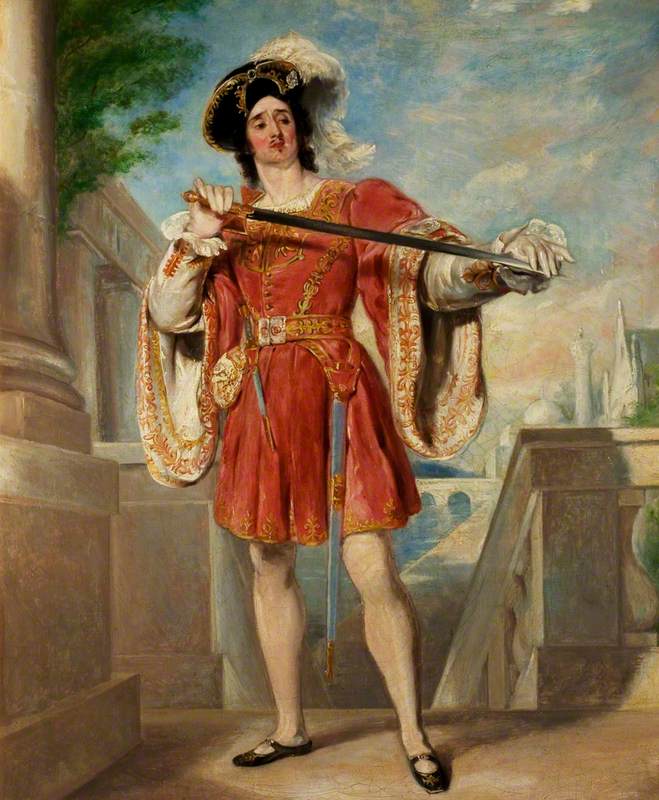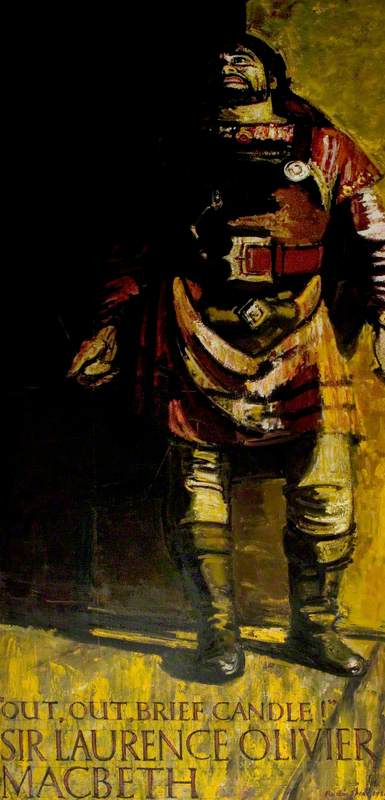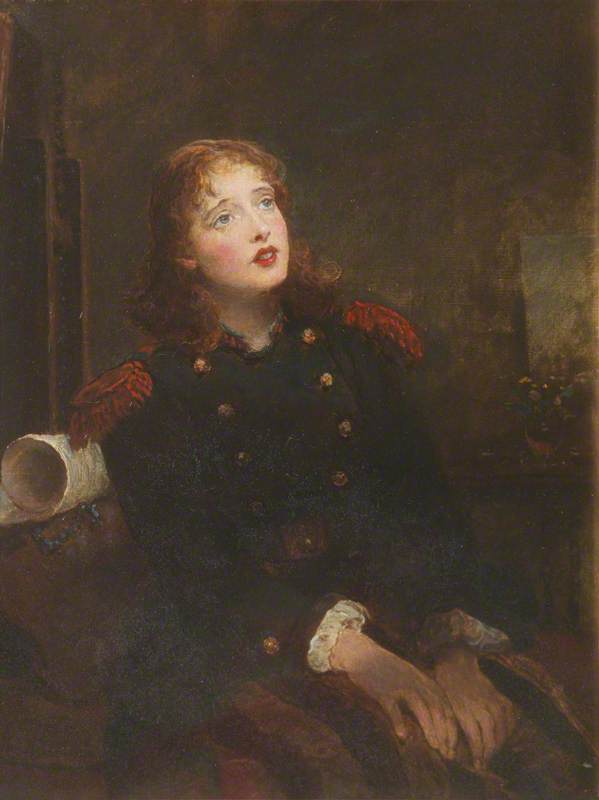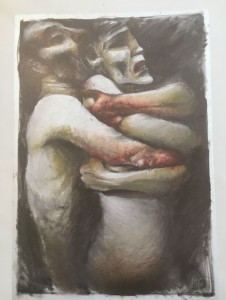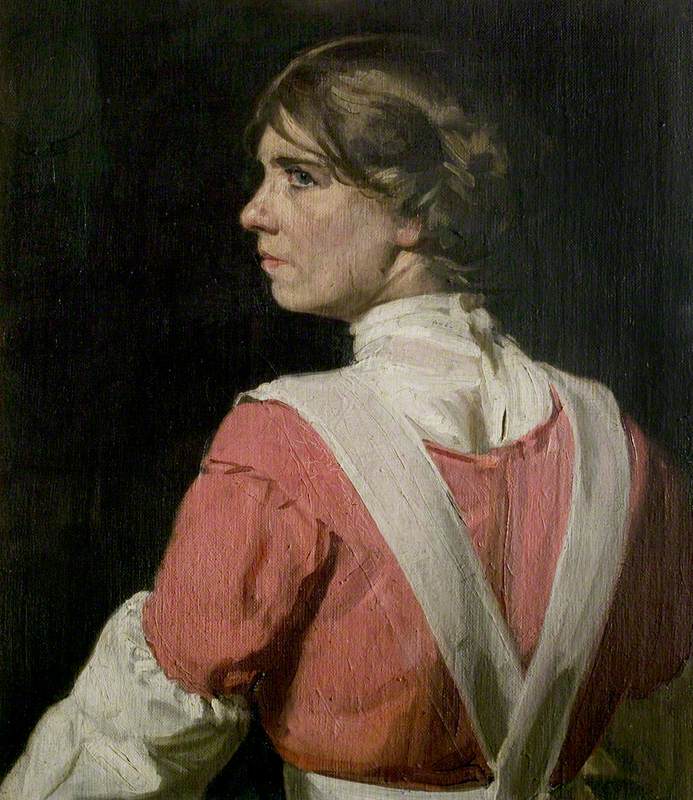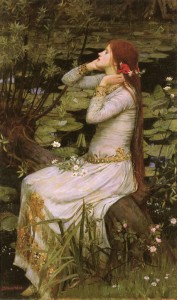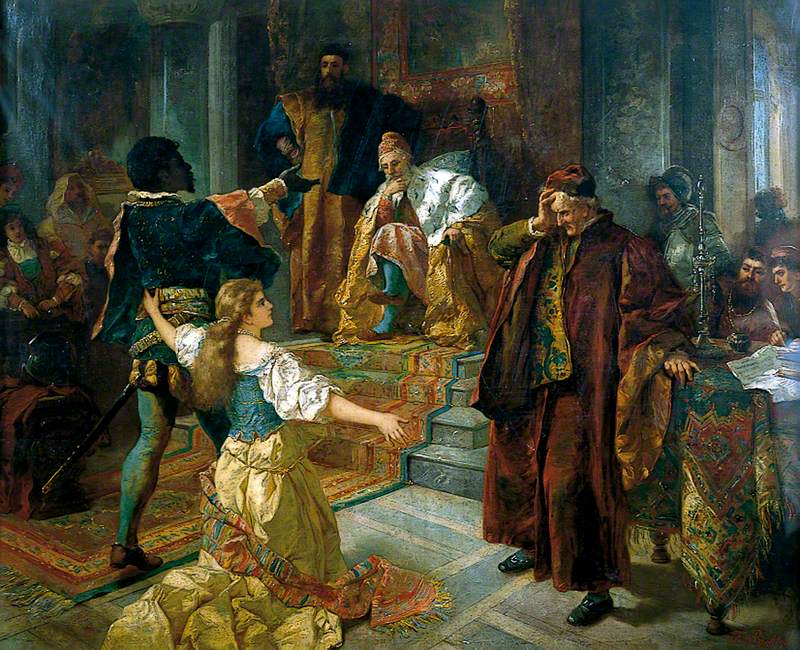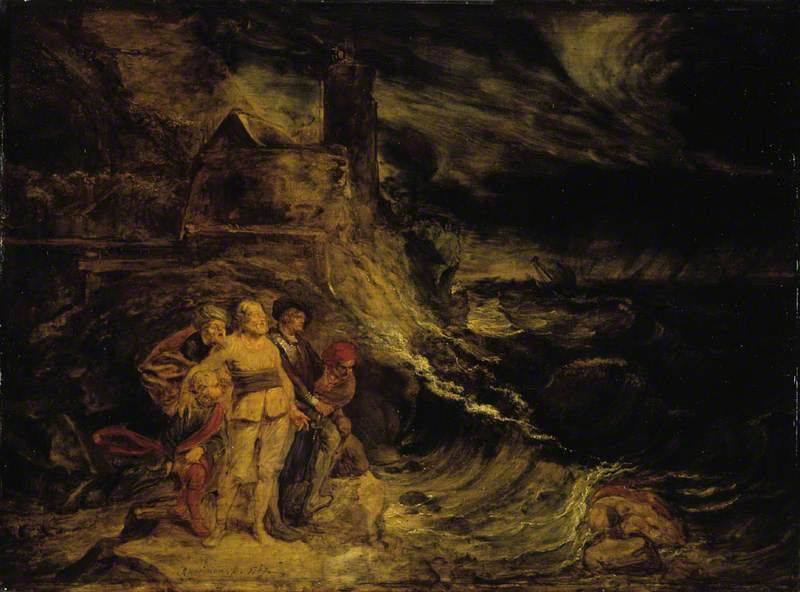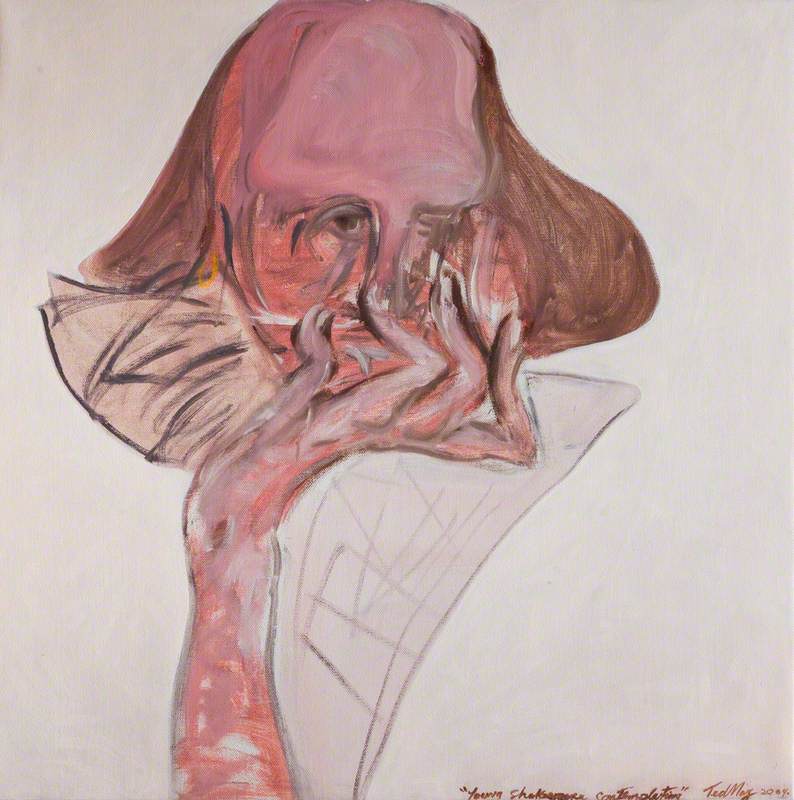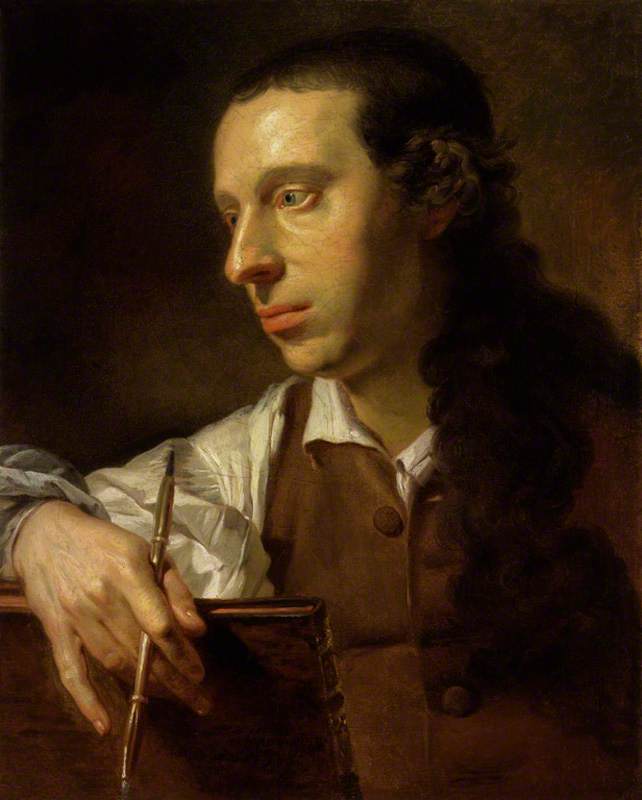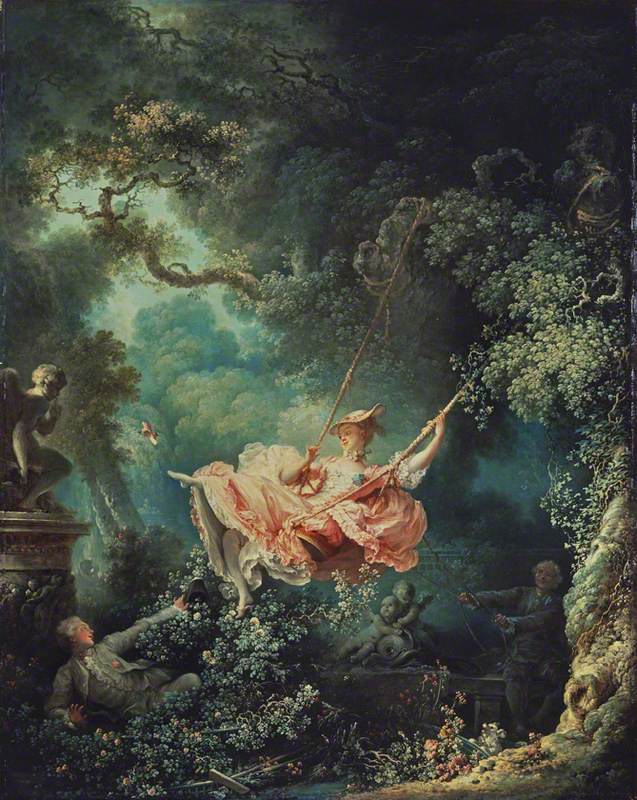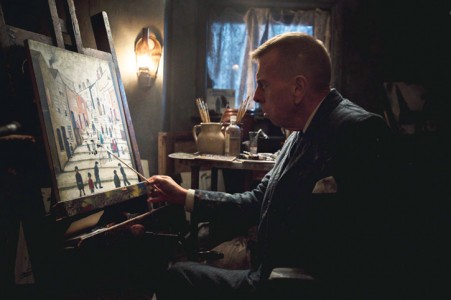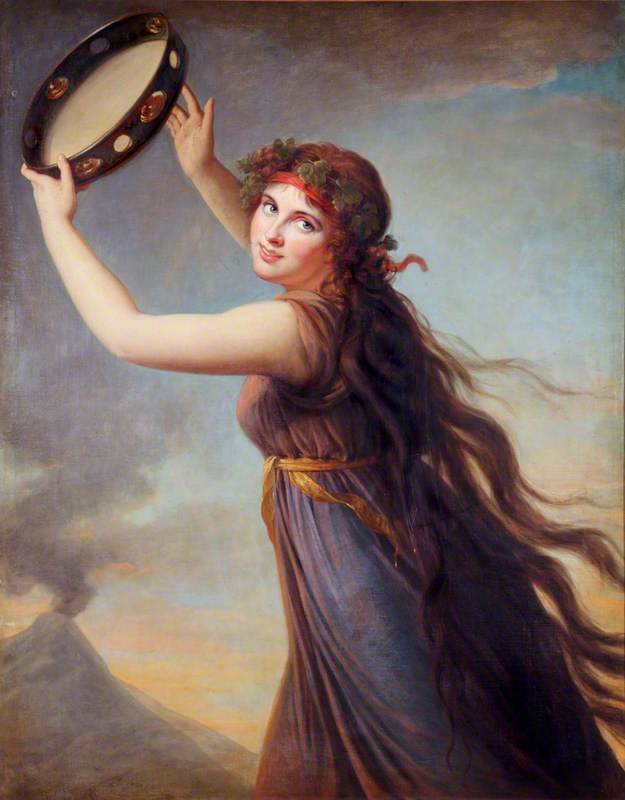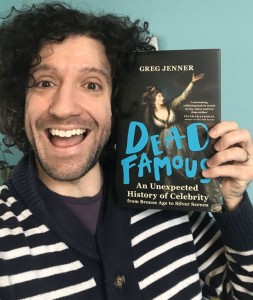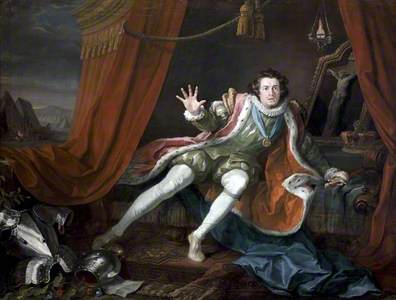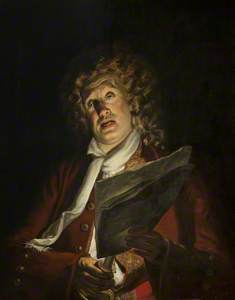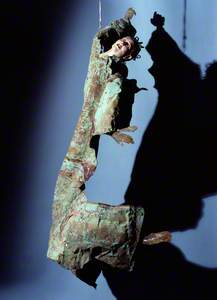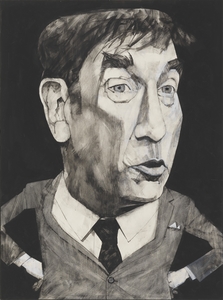PROLOGUE
A curious genre of overreaction awaits you in galleries across the UK: the theatrical portrait.
Portraits of stage actors from the eighteenth to twentieth centuries have the capacity to startle contemporary eyes with just how 'hammy' they can appear. 'Ham' is used in British English as a derisive shorthand for a mannered, flamboyant, overexaggerated, second rate, possibly camp acting performance.
Condescension could creep in on judgement of historical acting performances based on these artworks – if they looked 'hammy', surely performances from the past were by nature 'hammy'? This prejudice is challenged by exploring the glorious genre of the theatrical portrait. When we see actors frozen within exaggeration, is our first instinct to see it as comedic? To counter this, what value do these artworks have for us today?
ACT ONE: The theatrical portrait in action
William Hogarth's portrait of David Garrick as Richard III from around 1745 arguably stands as a vivid example of 'the ham' in action.
Garrick was one of the most famous British actors of the eighteenth century, and we find him deliciously pictured as the title character in William Shakespeare's Richard III. Garrick is portrayed mid-scene as the king awakes from a nightmare on the eve of the Battle of Bosworth, the place he will shortly die. Startled, the character has just seen the ghosts of previous opponents in an ominous foreshadowing of his own fate.
The king awakes here via Garrick and Hogarth in a state of mannered shock – one hand reaches out in fear whilst the other grasps a nearby sword. The composition is heavy-handed in storytelling – representations of faith, battle and kingship frame the exaggerated shock of Garrick. Potentially hammy? Certainly darling. However, it's important to remember the sophistication this image once held for eighteenth-century viewers.
Today, images of actors performing proliferate our media, yet in 1745 the cult of celebrity was still developing. The theatrical portrait was novel, and a thrilling reminder of a night at the theatre. Garrick is posing here at the height of drama and therefore celebrity effect. An entire unrecorded performance is lost to us in history, fossilised instead in one highly staged and static moment. Garrick essentially is trapped and therefore defined visually in a moment of what we might call ham.
Hogarth was a master of storytelling – art history often extols his virtuosity in satire. Yet here, arguably he commits earnestly to the piece supported by detailed art theory. Garrick's depiction is a direct example of the height of Hogarth's standard on visual beauty, as described in his book The Analysis of Beauty. The 'S' shaped serpentine curvature in the body forms 'a line of beauty' enticing the viewer. Our contemporary filters of overreaction and hamminess arguably deny us the ability to see the artwork for its intended purpose.
Continue to reach for Garrick as a sitter and you may find a similar pattern. David Garrick as Sir John Brute in John Vanbrugh's The Provoked Wife by Johann Zoffany from around 1763 is another masterpiece of the theatrical portrait.
David Garrick as Sir John Brute in Vanbrugh's 'The Provoked Wife'
1763–1765
Johann Zoffany (1733–1810) 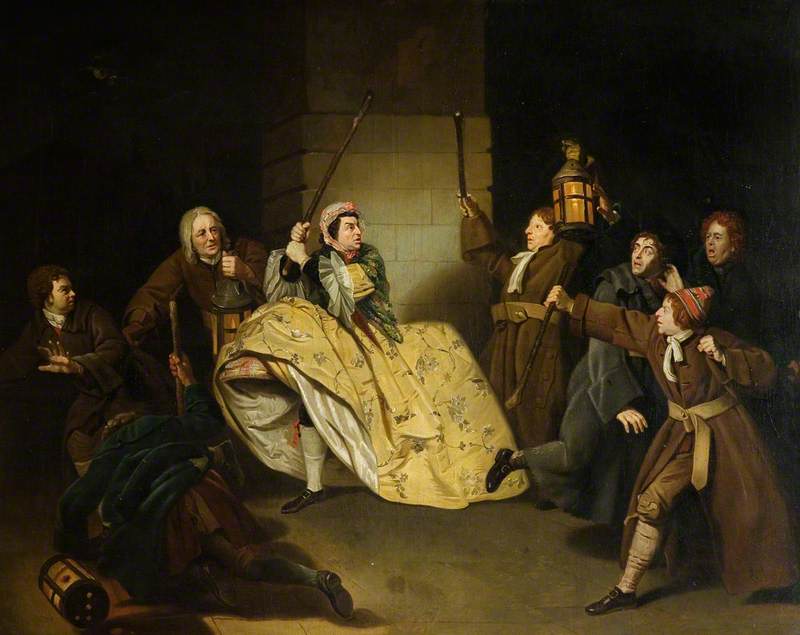
Here, Garrick brings vividly to life John Vanburgh's saucy tale of sex and betrayal. The character Sir John Brute is caught in a highly dramatised moment of arrest whilst drunk dressed in his wife's clothes.
A chorus of stilted and mannered overreaction greets us here in the composition. Ham to the extreme? The body language and camp exaggeration is an enjoyable visual riot. A riot, however, should not hide the mastery of Zoffany as an artist. Remove our contemporary baggage of how simplistic or stylised the acting performance may seem to modern eyes, and we find an eighteenth-century portrait artist at the height of their skill.
ACT TWO: Alas! Audience expectation has changed
Arthur William Devis' painting of Miss Eliza O'Neill as Belvidera in Thomas Otway's Venice Preserv'd reminds us of a poignant point on theatrical portraits – the audience she plays to in the portrait is now gone, as are the assumed references.
Miss Eliza O'Neill as Belvidera in Thomas Otway's 'Venice Preserved'
1816
Arthur William Devis (1762–1822) 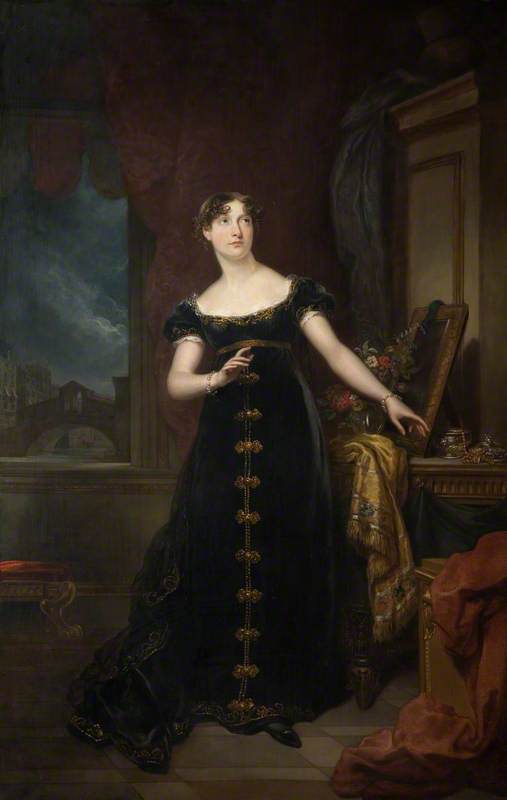
O'Neill greets us as a Regency version of Otway's 1680s Restoration tragedy. Dripping – nay, swimming – in drama, Venice Preserv'd is a story of clandestine love, marriage, politics, and grief. Belvidera's fate is insanity and death – a powerful vehicle for drama and poise.
O'Neill braces out a hand dramatically, pulling back perhaps in shock, or inhaling for a volley of dramatic prose. It's a sumptuous Regency-era portrait, designed to convey the visual reference of O'Neill on stage.
However, for contemporaries today the reference to Belvidera can be specialised and obscure, as is the concept of the theatrical portrait itself. Without any prior knowledge of the play and expectation of stylised movements which may have accompanied O'Neill's performance, we are instead met with a stilted composition. A dramatic flourish that one thrilled an audience has the capacity to be rendered – unfairly – as silly.
John William Buss' portrait of John Cooper as Captain Mouth in The Bride of Ludgate takes this one step further and increases the poignancy of the missing audience.
John Cooper as Captain Mouth in 'The Bride of Ludgate'
Robert William Buss (1804–1875) 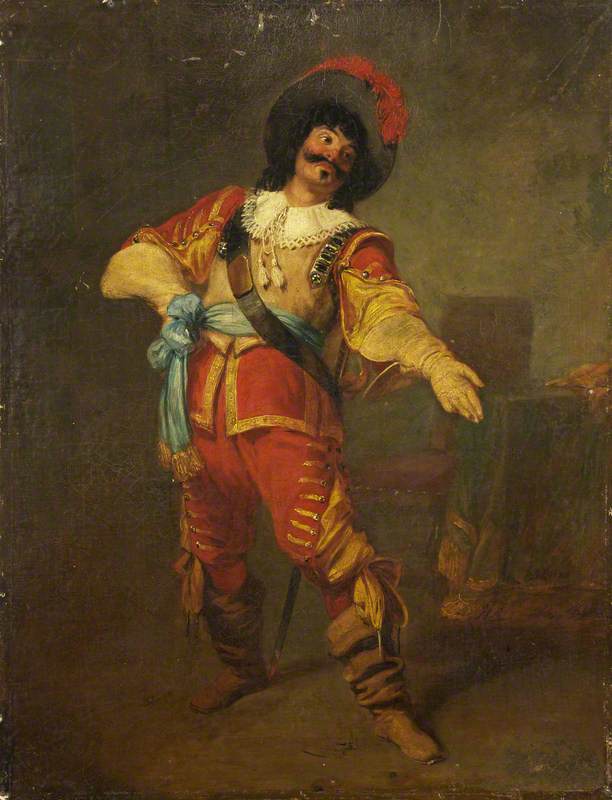
The comedic actor is in full costume, flourishing, elegantly bathed in the warm stage lighting. Yet the play is long over, as is the audience. Cooper remains frozen, playing to an audience and societal expectation of dramatic performance that no longer exists.
ACT THREE: Beyond ham
As we move deeper into the genre of theatrical portraits, can we shake loose the association with the ham actor? Historical portraits can and often do feel startlingly contemporary. Dame Ellen Terry as Lady Macbeth, painted by John Singer Sargent in around 1889, is the most extraordinary beacon of emotion.
Dame Ellen Terry (1847–1928), as Lady Macbeth
(after John Singer Sargent)
Reginald Grenville Eves (1876–1941) 
Sargent composes Terry in an imagined posture, absent from Macbeth and Terry's original performance. Lady Macbeth becomes queen through regicide – a short-lived victory resulting in her own death. Holding the crown above her head, Terry sears us with emotion. Her gaze is at as brittle as it is powerful, piercing us with an intensity of emotion.
Sargent achieves this triumph of emotion and adds his mastery of glamour. The stage costume positively glitters on canvas through the artist's treatment, amplifying her presence through the sheer spectacle of appearance. Bravo, dear.
This portrait of an actor (possibly Charles Dibdin) by Arthur William Devis is another artwork that offers a startling emotional impact.
Portrait of an Actor
(possibly Charles Dibdin) 1780–1822
Arthur William Devis (1762–1822) 
Dramatically illuminated by his own candlelight, the actor is caught in what could be described as mid-performance. The expression is thrilling in its immediacy – the reaction feels fleeting as if he is caught in the middle of a sentence or note. Our actor is performing, captured with a nuance in the face that suggests swift transition to another expression or pose.
This painting of Dorothea Baird from around 1890 similarly can be read as offering a greater degree of sophistication in the genre of theatrical portraits.
See beyond the costume and landscape and you find a face framed in doll-like Victorian beauty. Could we call this hammy? Yes, luvvie.
However, there is a restraint in this performance and on the canvas. No sweeping arms, mannered poses, or dramatic extremes. Instead, the composition and performance build carefully to the face, illuminated to best capture a seeking emotion in the eyes. Baird is no doubt performing with a heavy dose of sentimentality, yet her performance control is matched with the unknown artist's use of light in a successful visual narrative.
ACT FOUR: Sophistication and self-awareness
As the silver screen dawns, theatricality gains a wider reach in the media. The theatrical portrait in turn morphs towards modernism and the photograph. The genre is far from dead – it evolves in ever greater sophistication and self-awareness. Lynn Seymour by Andrew Logan is a captivating and haunting image.
Seymour, a dancer and choreographer, entrances the eye in a state of motion with an almost alien beauty. The composition – and Seymour herself – speak to us of theatricality, of self-awareness and mannered pose as we have seen historically. The reference hits our subconscious, yet it's wrapped in a sophistication that's compelling. Shadow and texture create sharp, metallic lines that frame a drama (distress?) as our sitter appears suspended from a hook.
For a total scene change, the line 'Ooh err missis' radiates out in this incredible portrait of Frankie Howerd by Barry Fantoni from the late 1970s.
Caricature blends seamlessly with the theatrical portrait in this study of the British comedian that perfectly captures the camp performance in action. Every bit the theatrical portrait, arguably this image consciously reaches for drama to tell a story. A story that also conveys a deep humanism – the treatment of Howerd's face and the eye, for example, is affecting in its sensitivity.
Fantoni is surely aware of the effect the theatrical portrait has on us and uses it as a vehicle to explore the comic beyond the camp. 'Titter ye not', as Frankie would have said, hands on hips...
EPILOGUE
Can we assert that taking a condescending view to the actors (ham or otherwise) in art history is an injustice to the theatrical portraits we have inherited today? The genre is a visual code embedded in our culture, expanding and changing as we do in society. It may at times be considered simplistic or open to ridicule, yet it has sophisticated roots in our shared culture. To diminish this is to lose the skill and humanism theatrical portraits offer. Bette Davis once said that acting should be bigger than life. Isn't it right, therefore, that its artwork should be too?
AND SCENE
Jon Sleigh, freelance arts educator
